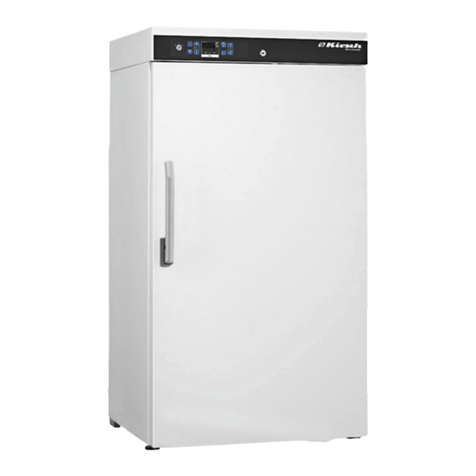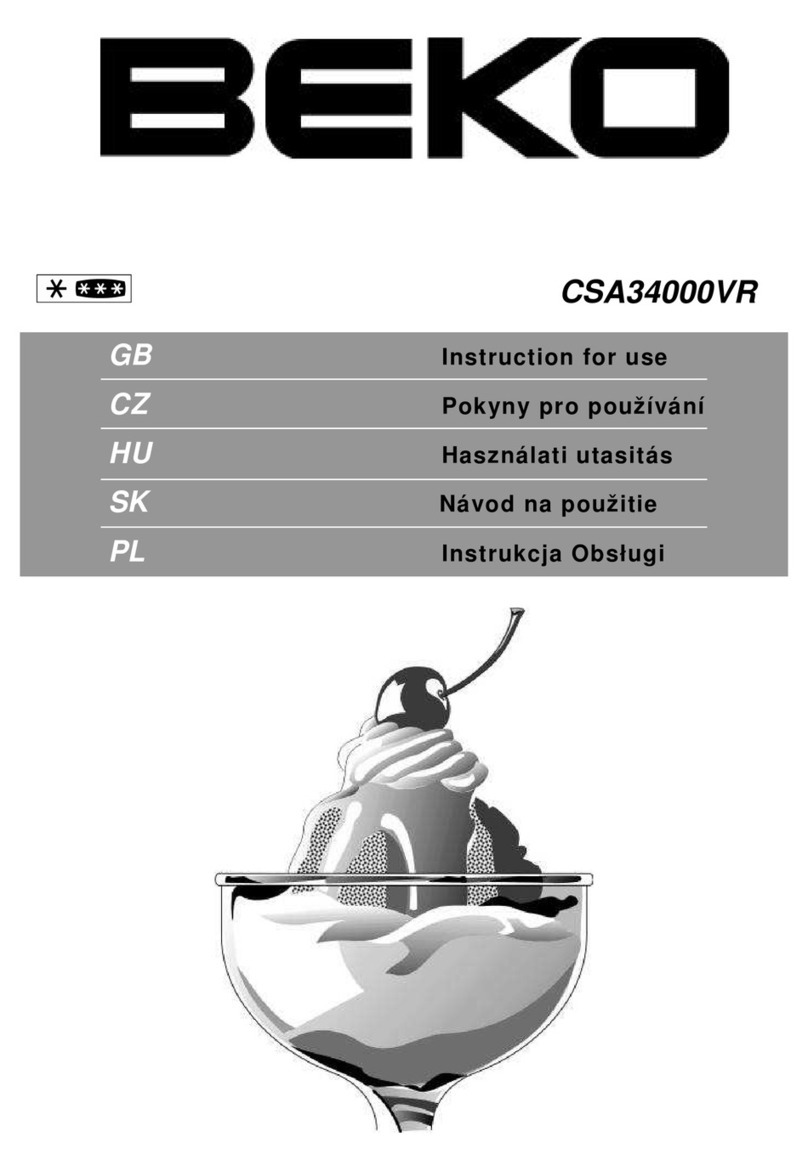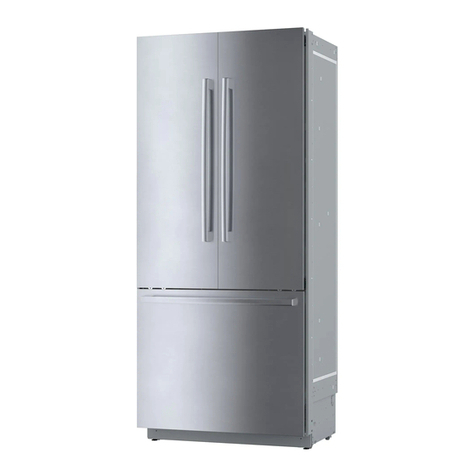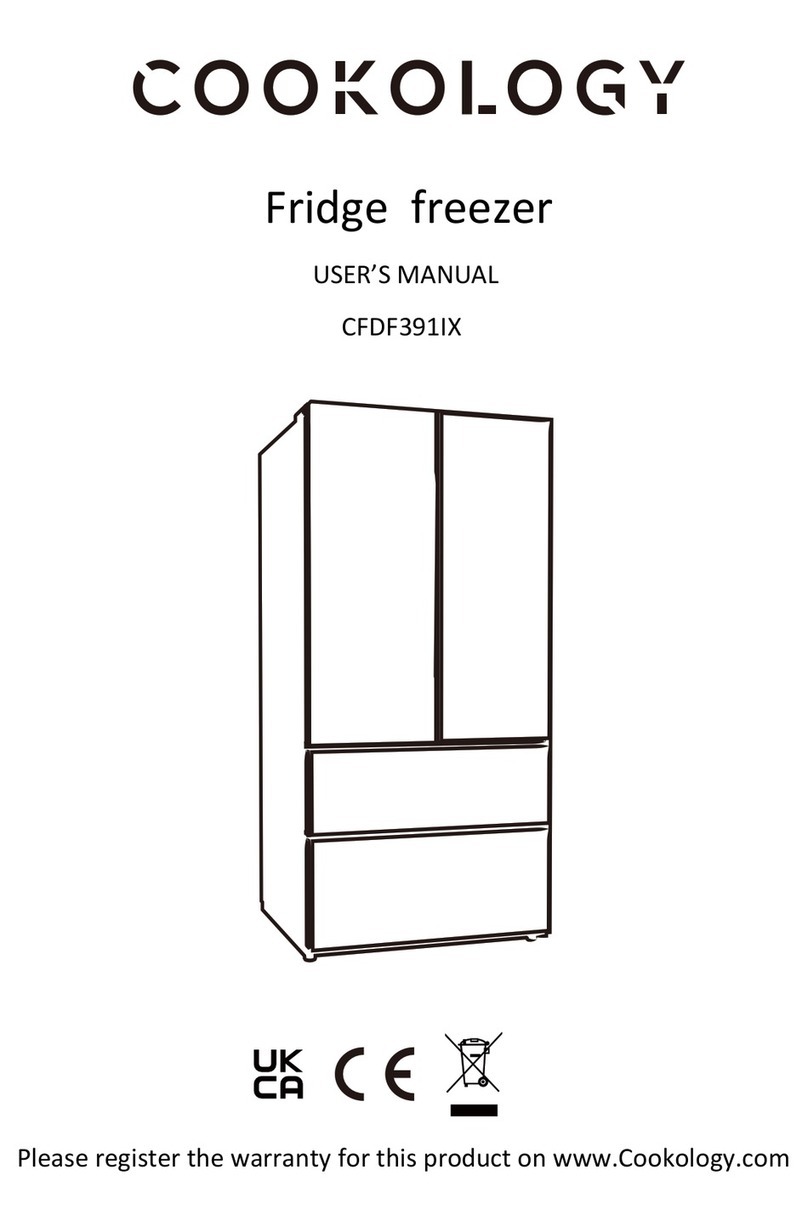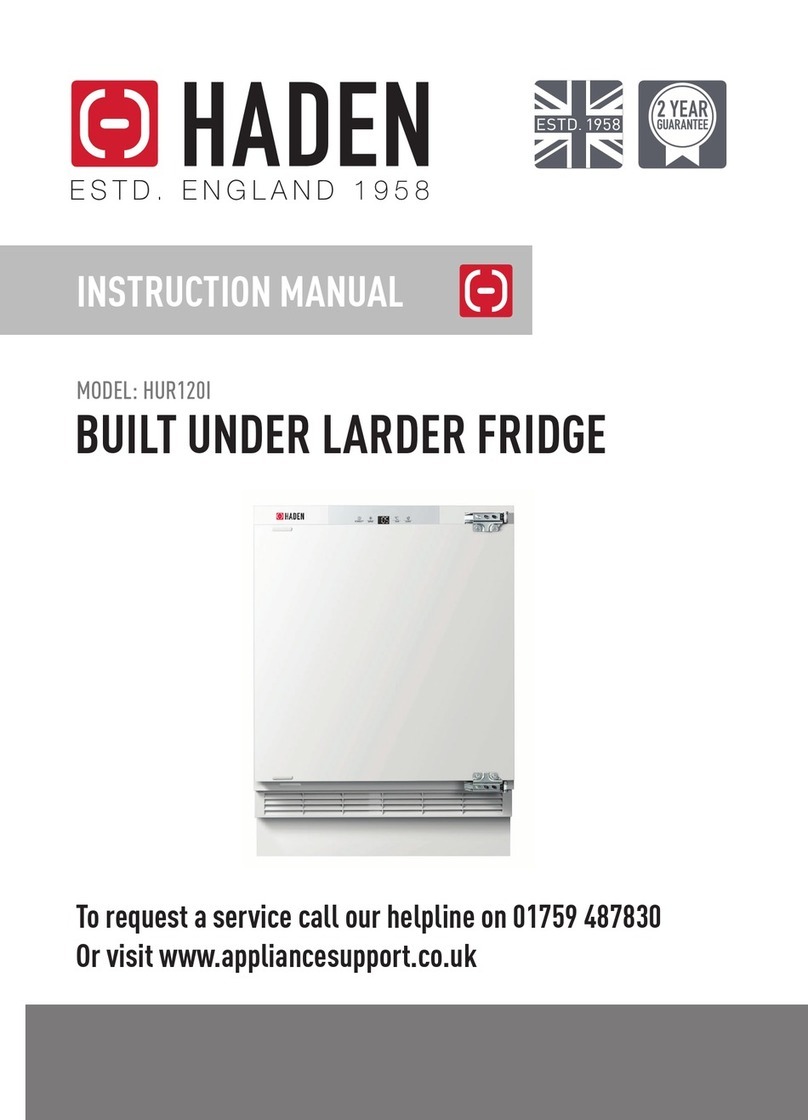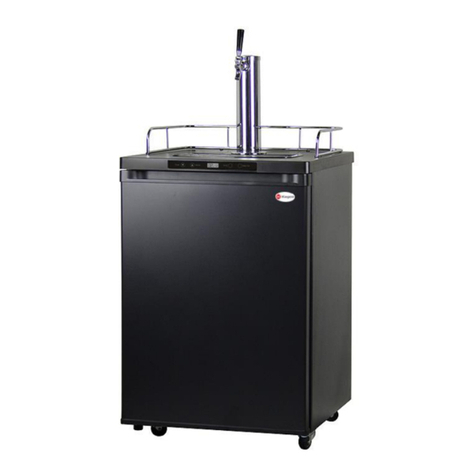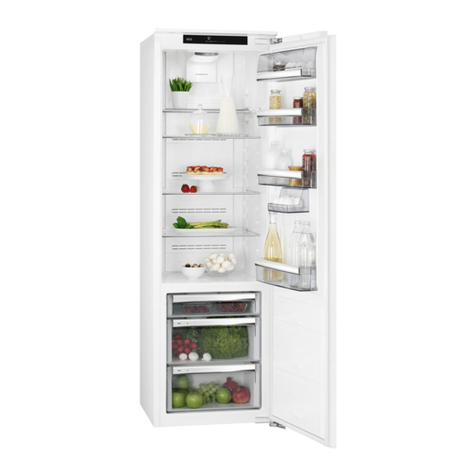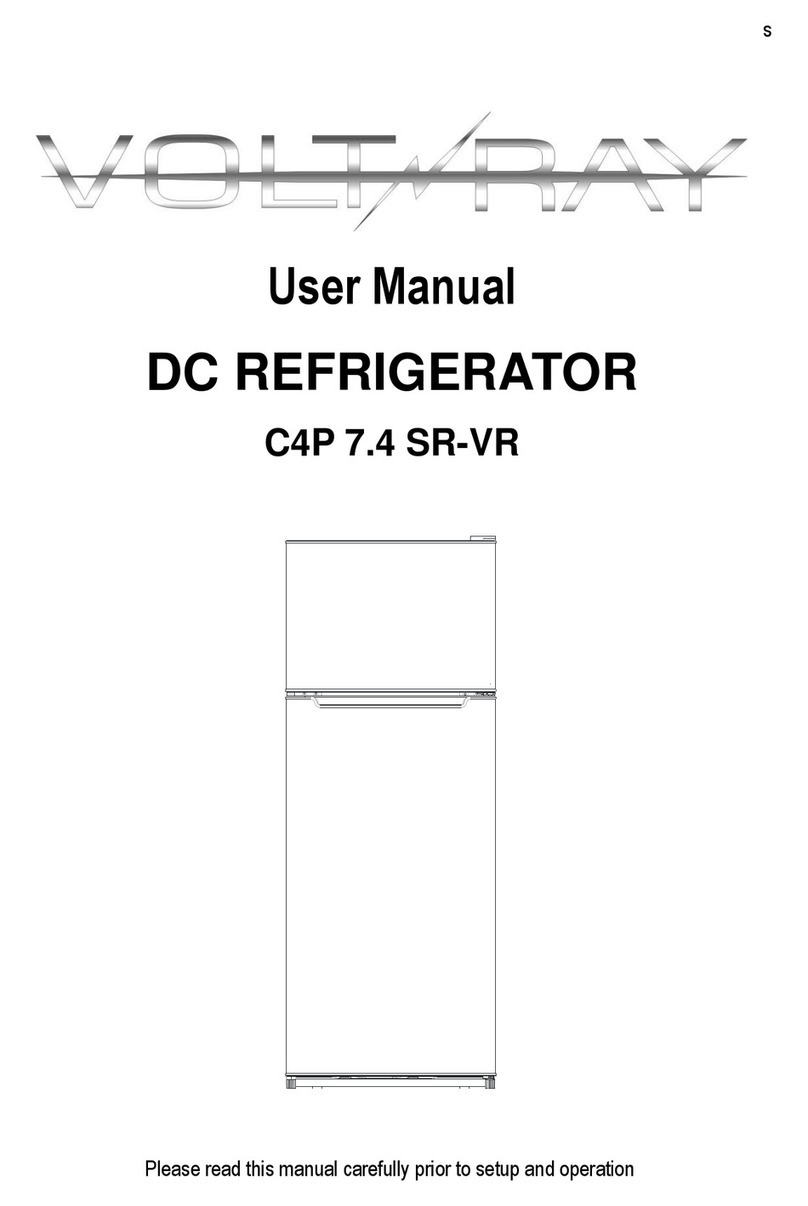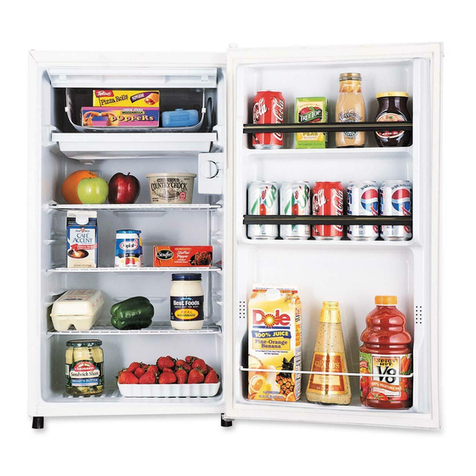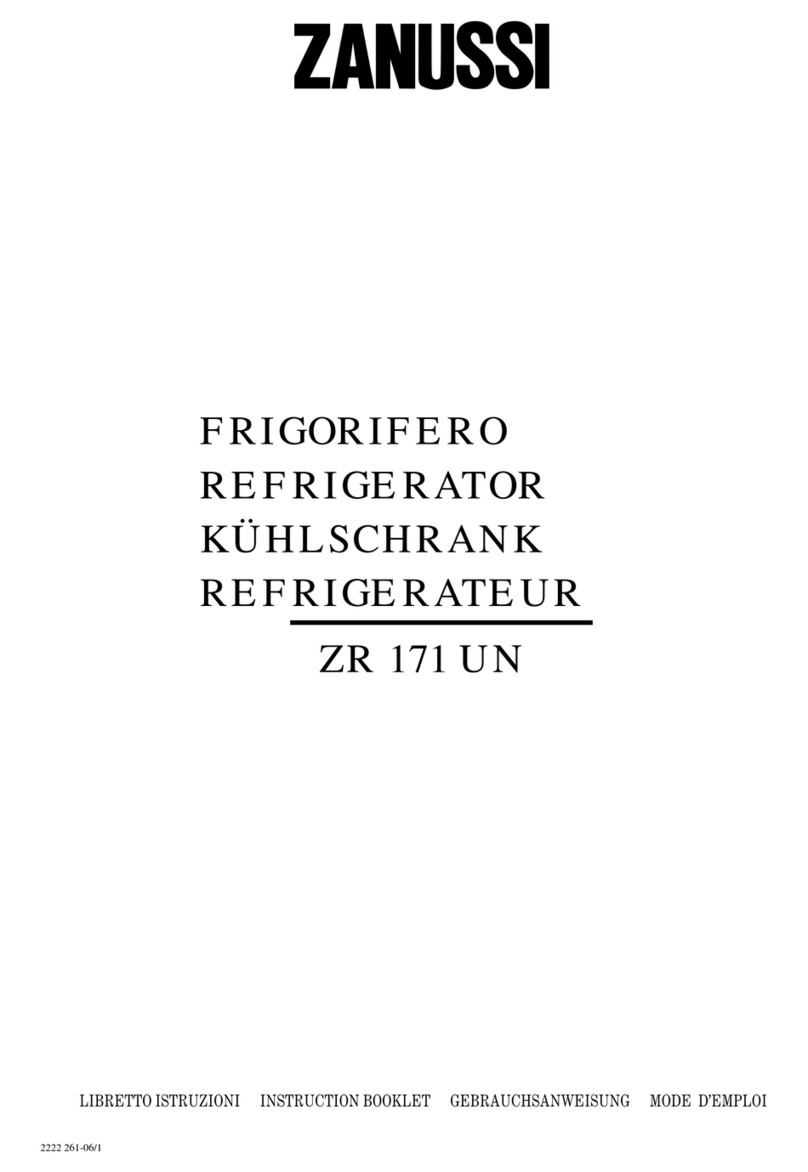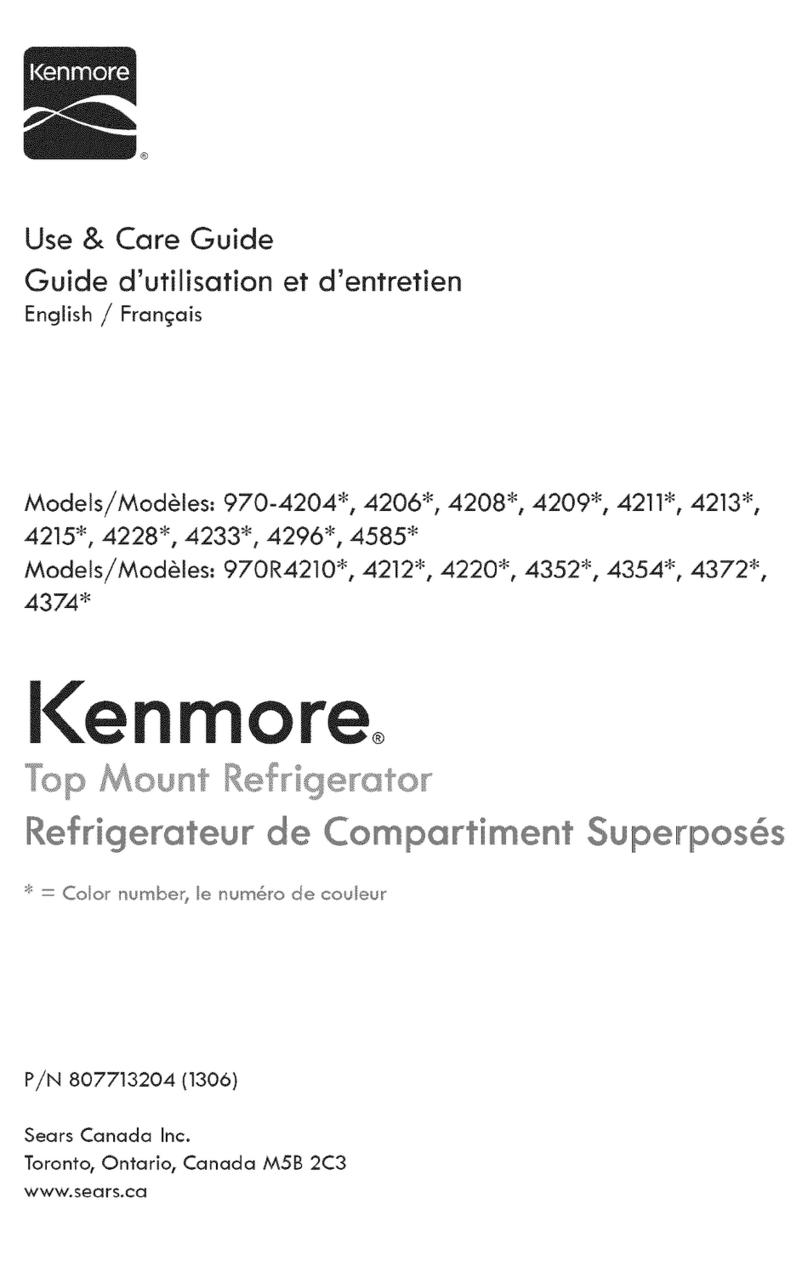Global Refrigeration KDC47 User manual

SERVICE &
INSTALLATION
MANUAL
With Carel Digital Control
DIPPING CABINET
Model: KDC47
Model: KDC67
Model: KDC87
GLOBAL REFRIGERATION, INC
563 Corbin Road - Honea Path, SC 29654
864-260-6600 Fax 864-260-6601
PART NUMBER 51-5869-01


ADDITIONAL INFORMATION OR TECHNICAL ASSISTANCE
For customer service or technical assistance, please call our
manufacturing facility toll free number:
1-888-650-9799
Our Customer Service Representatives and Engineers are willing to
assist you in any way possible. Office hours are from 8am to 5pm,
Monday-Friday (Eastern Standard Time)
****Copies of Installation and Maintenance Manual and for helpful videos, please visit
our web site at; www.globalref.com*****
___________________________________________________________________
Corporate Offices: 5855 Grant Avenue, Cleveland, OH 44105. USA
Manufacturing Facility: 563 Corbin Road, Honea Path, SC 29654. USA
Phone: 1.864.260.6600 Toll Free 1.888.650.9799 Fax 1-864-260-6601
Important information is contained in this manual
which should be retained in a convenient location for
future reference. Information in the manual is subject
to change without notice.


2
Installation Instructions – Illuminated Dipping Cabinets
FREIGHT DAMAGES AND SHORTAGES
IMPORTANT
The cabinet was inspected and packaged at the factory,
and should have arrived in excellent condition. The
transportation company or other parties involved in the
shipment are responsible for loss and/or “damage”. Always
make an inspection before and after uncrating, preferably at
the point of unloading by the transportation company.
INSPECTING FOR DAMAGES
Note:
Always use care when removing shipping tape, blocks, pads,
hardware or other material. Contact your dealer or distributor
if technical assistance is required.
Check the cartons or containers.If these are damaged
in any way, open them and inspect the contents in the
driver’s presence. If damage is detected, do the
following:
1. Have the driver note the nature and extent of the
damage on the freight bill.
2. Notify the transportation company’s office to
request an inspection. Carrier claim policies
usually require inspections to be made within 15
days of delivery.
3. If damage is noticed, file a claim with the
transportation company.
FILING A CLAIM
File a claim for loss at once with the transportation
company for:
A. A cash adjustment B. Repairs C. Replacement
When filing your claim, retain all packaging materials
and receipts.
HANDLING THE CABINET
Note:
The refrigeration system of the cabinet is designed to operate
with the cabinet located on a flat surface. DO NOT tilt the
cabinet more than 30ºto any side. If the cabinet must be
tilted on an angle for handling or moving purposes, allow it to
sit in an upright position 20 to 30 minutes prior to operating.
CHOOSING A LOCATION
This model cabinet should be situated to allow proper
air circulation. The cabinet must be installed on sturdy,
level floor and positioned so that it can be plugged into
a properly grounded three-prong electrical wall outlet of
115 volt, 60 hz. The electrical outlet should not be
controlled by a wall switch which might be turned off
accidentally.
UNCRATING THE CABINET
The cabinet should be moved as close as possible to the
operating location before removing the skid. Be sure to
follow the steps in the “INSPECTING FOR DAMAGES”
instructions.
INSTALLING THE CABINET
Whenever possible leave the crate skid on the cabinet
until it is moved close to the final position. When it is
necessary to move the cabinet through a doorway, it may
be necessary to remove the crate skid.
IMPORTANT - Run the cabinet down to storage
temperature before adding product.
CAUTION
A. Do not locate cabinet where sunlight or drafts from
fans, air conditioning or open doors can affect product
temperature.
B. Run cabinet before building in or attaching panels or
accessories.
C. Front and rear grills must be kept clear for adjustments and
service.
D. Cabinet must be installed on the finished floor to assure
condensing unit (employee side) can be slid out, or removed
for service. DO NOT seal in with cover molding or
caulking in the area where condensing unit pulls out.
E. DO NOT use extension cords to power this equipment.
GROUNDING INSTRUCTIONS
This appliance is equipped with a three-prong (grounding)
plug for your protection against shock hazards. The
appliance should be plugged directly into a properly
grounded three-prong receptacle.
Where a two-prong wall receptacle is encountered, it must
be replaced with a properly grounded three-prong
receptacle in accordance with the National Electrical Code
and local codes and ordinances. The work must be done
by a licensed electrician.
IMPORTANT
Do not, under any circumstance,
cut or remove the round grounding plug
from the appliance plug.

3
WARNING
Consult a licensed electrician if you have any doubt
about the grounding of your wall receptacle. Only a
licensed electrician can determine the polarization of
your wall receptacle. Only a properly installed three-
pronged wall receptacle assures the proper
polarization with the appliance plug.
Run necessary electrical, water supply and drain lines
before setting the cabinet in position. Shim under the
cabinet as necessary to level it.
IMPORTANT - Should two or more
cabinets be set up in a row, space must be
left between freezers so as to allow access
to end glass and tightening lid mounting
hardware.
Rivets are provided on the operator’s side for mounting
dipper well and other accessories.
CABINET START-UP
Once the cabinet has been located in its permanent
location and the proper power and grounding have
been provided, the following items must be checked or
completed:
A. Cut and remove the compressor hold-down band
(if applicable) so the compressor “floats” freely.
B. Check for traces of oil on the compressor pan
which could mean a broken or leaking refrigeration
line. If oil is present, call a service technician. DO
NOT start the compressor.
C. Check the refrigeration lines to see that they are
“free” and no damage was done during shipping.
D. Check fan blade for free operation.
E. Turn on the main power switch. Once the
compressor starts, the voltage should be checked
at the compressor terminals to determine if there is
proper voltage to the compressor. The voltage
should not exceed 10% above or below the rated
compressor voltage EXAMPLE: If the voltage
reads 115 volts with no load and it drops below
103 volts when the compressor starts, it may
indicate that the supply wiring is too small or that
the wire run is too long.
F. Listen for any unusual noise such as lines
vibrating.
G. The electronic temperature controller is a Carel
digitally controlled microprocessor located in upper
RH corner of grill on the operator side. Please refer
to separate instruction sheet, included with freezer,
which details setting and operation of the digital
controller. Please note that a separate “OFF”
switch is provided for your convenience in defrosting
the cabinet.
H. Allow the cabinet to pull down and cycle prior to
loading with product (approx. 12 hours).
IMPORTANT USAGE INSTRUCTIONS
Dipping Cabinets
The cabinet must be installed carefully, following the
Installation Instructions mentioned above.
The front and rear grills must be clear of any obstructions
so the intake and exhausting of air for the condensing unit
can move freely.
Dipping cabinets are designed for use in an
air conditioned store. This cabinet is
designed for merchandising, not hardening
of the product. The dipping cabinet is
designed to run at 70-80 degrees F maximum
and humidity level of 50-55% maximum in the
store.
High humidity can cause fogging of the lid and front glass.
High temperatures, installation of warm
product and heavy usage can cause the
product to soften. This condition will be
more noticeable at the top of the cans.
The corners of the cabinets are the coldest areas. These
areas should be used for product that is more difficult to
keep firm.
Frost and ice act as insulators. The need for defrosting will
depend on usage and product firmness.
To minimize frost accumulation, it is important to close the
lid immediately after each serving. DO NOT leave open or
open unnecessarily.
If the frost is scraped daily with a plastic scraper, intervals
between complete defrosting may be ex-tended.
Digital Controller adjustments should be
made incrementally, either warmer or colder,
allowing 24 hours between adjustments, to
allow the product to stabilize.

4
Usage Instructions (cont.)
Hand dipping is most profitable when it is correctly
executed. Training should be intensive.
First you must have proper equipment. Don’t
handicap your employees with a dull scoop which has
a tendency to squeeze the ice cream making it difficult
to control. A sharp edged scoop on the other hand,
cuts a nice “ribbon” of ice cream and rolls it lightly into
an attractive round ball.
Let the scoop do the work. It should be started at the
outside edge of the can…”rolled” around the can and
then upward! Handling it this way will produce a neat,
lightly compressed ball of ice cream that’s consistent in
weight – portion after portion. Never press the scoop
against the side of the can as this will result in a small,
heavy ball of ice cream and lend itself to “over
scooping”.
Every time you touch or handle ice cream some air is
squeezed out. Air is important in ice cream just as in
bread or cake, to make it light and fluffy enough for
good eating. The air you press out will usually make
you dip extra in order to gratify your customer’s
anticipated idea of size and shape.
The next scoop full should start where the last left off.
Continue in the same circular pattern with the circles
getting smaller as you approach the center of the can.
This causes the ice cream to go down evenly and is
important because keeping the ice cream level in the
can eliminates smeared arms and reduces the need to
scrape down the sides of the can with a spade.
Even in the best of operations, however, leveling off
will be necessary. This should be done lightly and with
the back of the spade turned toward the side of the
can. When it is necessary to scrape down a can, the
scraped ice cream will not dip as well nor will it taste as
smooth.
Since transferred ice cream is difficult to dip in
portioned control, it is necessary to dip as near to the
bottom of the can as possible. Ice cream should not be
transferred from one can to another if there is more
than one inch in the bottom.
The ice cream cabinet is the hand dipper’s workshop,
as its importance to the retail operation is considerable
and proper use will increase sales and profits.
One of the first orders of maintenance is proper dipping
temperatures. Your cabinet representative can be a
help in deciding the correct temperature for efficient
scooping.
Some operators prefer to scoop from 5 to 9 degrees
above zero, and still others up to 12 degrees. This
question can be settled more efficiently as experience
dictates the best answer for your individual operation.
If, for instance, most of the ice cream is served right in the
store, it can be scooped at a higher temperature than that
which goes outside in a drive-in operation. Although the
formula used in making the ice cream makes a difference
in the rapidity of melting, the conditions under which it is
served are also important.
Sherbets, which are high in sugar content, will require
much lower cabinet temperatures than ice cream. If
possible, they should be stored in the coldest part of a
general cabinet or in a separate cabinet to permit the
lower temperature requirement. Because sherbets are
heavier, the weight formula for scooping ice cream will not
apply. Also, because the variation in recipes is much wider
than in ice cream, it will be necessary for each store to
work out an effective separate weight and cost ration on
sherbets.
A flavor pattern for location of the ice cream in the
cabinets must also be worked out. The aroma of certain
flavors is strong enough to transfer to milder flavors. For
example, any ice cream containing peppermint, licorice or
banana should not be stored next to a mild flavor such as
vanilla. Use your sense of smell in deciding where to
locate the cans to avoid flavor transfer. Then make a chart
and keep the cans in these established locations.
In locating the flavors in the cabinet it also is well to re-
member that the flavors with higher sugar content (candy,
ripple, maple syrup) require a lower temperature for most
effective scooping. Since temperature may vary slightly
within the cabinet, it would be well to plan your high sugar
content ice cream for the colder area. Here, too, a chart,
based on experience, will be helpful. You will want to call
on your cabinet representative once again for information
about the best location for each of the various flavors.
It must be recognized that frost accumulation on the
cabinet walls will impair refrigeration efficiency. The best
approach to the problem is to keep the lid or cover closed
whenever possible and to set up a regular schedule of
cabinet defrosting. Daily wiping with terry towels is
recommended.
Housekeeping is very important. Keep the outside of the
cabinet sparkling clean with frequent cleaning. Be
especially careful with the lids and covers…continually
cleaning off drips of ice cream as they occur. Attendants
should be trained to use slack time to wipe the cabinets.
There is always the fact that ice cream is occasionally
dropped into the bottom of the cabinet. This dropped ice
cream is unsanitary and a total loss and expense to the
company. Carelessness is the biggest contributor; training
and vigilance is the solution. An up-to-date can skirt
system will eliminate the problem.

5
GENERAL OPERATIONS
All the dipping cabinet models are of the same basic de-
sign, consisting of a bare tube condenser and a cap tube
fed tank wrap evaporator.
Ice formation on the walls over a period of time is nor-
mal. This frost should be scraped off periodically in order
to maintain peak performance. These cabinets are
electronic digitally controlled for various temperature
requirements. The electronic controller is located in
upper RH corner of grill on the operator side. Please
refer to separate instructions for the digital controller, to
change the temperature range.
These cabinets are manual defrost and a drain is pro-
vided for periodic cleaning. A garden hose can be
attached to the drain plug for draining away any water
that might have accumulated. This drain attachment is
located in the front base rail of the cabinet. NOTE: The
power supply cord must be disconnected when cleaning
or servicing these cabinets.
NOTE: On initial cabinet pull down the bare tube
condenser may become warm to the touch until the
normal operating temperatures are achieved.
Refer to model serial data tag for cabinet amperage,
refrigerant charge & type.
Compressors being used in these cabinets utilize
Refrigerant 404A and polyester oil. Because of the
Hygroscopic nature of this oil, extreme care must be
taken when any component is changed within the
system. In the case of compressor replacement, work
should be completed before the caps are removed from
the compressor.
Agitation of the oil should be kept to a minimum.
Compressors should not be open to the atmosphere for
more than 15 minutes max. Should contamination occur
the oil can be removed and recharged (following
compressor manufacturer’s guidelines when performing
this procedure). Because of the porous nature of plastic,
polyester oil should be stored in a metal container.
Moisture contained within the oil cannot be removed
even under high vacuum conditions and must be
replaced.

6
To avoid the possibility of an electrical shock, turn OFF freezer and unplug
the electric cord of the cabinet before cleaning or touching electrical
connections or parts.
Figure 1
CONDENSER
DRAIN HOSE
CLEANING & MAINTENANCE
CLEANING THE CABINET EXTERIOR
Wipe the exterior occasionally with a cloth dampened in
mild detergent water; rinse, and wipe dry with a soft, dry
cloth.DO NOT use abrasive or caustic cleaners or
scouring pads.
CLEANING THE CONDENSER – FIG. 1
Periodic cleaning of the condenser can be easily
accomplished by brushing the coils with a soft brush
and/or using a vacuum cleaner with a brush attachment.
Be sure that dirt, dust, and collection of other debris do
not build up to a point air circulation through the
condenser is restricted.
CLEANING THE STORAGE COMPARTMENT
1. Remove product and store it in another suitable
cabinet, if possible. Be sure to prevent spoilage of
the product which may occur if it is left at room
temperature.
2. Turn OFF the freezer and unplug the cabinet.
3. Remove the can skirts, and frost shields, if used.
4. Defrost completely prior to cleaning.
5. Wash the can skirts and the entire interior storage
area with warm water and baking soda solution –
about a tablespoon of baking soda per quart of
water. Rinse thoroughly with clean water and wipe
dry.
6. A drain hose (FIG. 1) is provided in the compressor
compartment. Connection is made to fit a standard
garden hose for ease of draining water from inside
of the tank area.
IMPORTANT: DO NOT use any objects or cleaners
which may leave residues, odors, or particles. Avoid the
use of strong chemicals or abrasive cleaners which may
damage the interior surfaces and contaminate product
within the storage area.
7. Wash, rinse, and dry the can skirts and frost shields,
if used.
8. Be sure to correctly reinstall the can skirts and frost
shields, if used, plug in the cabinet, and allow time
for cooling of the storage area before storing
product.

7
Cabinet Trouble Shooting Guide
TROUBLE
COMMON CAUSE
REMEDY
UNIT WILL NOT RUN
Blown Fuse
Replace fuse. Check outlet with
voltmeter, should check 115 V
plus or minus 10%. If circuit
overloaded, either reduce load or
have electrician install separate
circuit. If unable to remedy any
other way, install
autotransformer.
Faulty Digital Controller
Jumper across terminals of
control if unit runs and
connections are all tight, replace
control.
Broken Relay
Check relay, replace if
necessary.
Broken Overload
Check overload, replace if
necessary.
Broken Compressor
Check compressor, replace if
necessary.
Defective service cord
Check with test light at unit. If no
circuit and current is indicated at
outlet, replace or repair.
Broken lead to compressor or
cold control
Repair or replace broken leads.
CABINET TOO WARM
Fan Motor Not running
Check and replace fan motor if
necessary
Digital controller set too warm or
broken
Check and replace if necessary.
Shortage of refrigerant
Check for leaks. Repair,
evacuate and recharge systems.
Not enough air circulation around
cabinet.
Relocate cabinet or provide
clearance to allow sufficient
circulation.
Dirty condenser or obstructed
condenser ducts.
Clean the condenser.
CABINET TOO COLD
Digital control improperly set.
Program to warmer position.

8
TROUBLE
COMMON CAUSE
REMEDY
UNIT RUNS ALL THE
TIME
Not enough air circulation around
cabinet, or air circulation is
restricted.
Relocate cabinet or provide
proper clearances around
cabinet.
.
Refrigerant charge.
Undercharge or overcharge-
check, evacuate and recharge
with proper charge.
Room temperature too warm.
Ventilate room as much as
possible.
Digital Controller.
Check control; if it allows unit to
operate all the time, replace
control.
NOISY OPERATION
Loose flooring or floor not firm
Tighten flooring or brace floor.
Tubing contacting cabinet or
other tubing.
Move tubing.
Cabinet not level.
Level cabinet.
Fan hitting shroud.
Move fan blade.
Compressor mechanically
grounded.
Replace compressor mounts.
UNIT CYCLES ON
OVERLOAD
Broken relay.
Replace relay.
Weak overload protector.
Replace overload protector.
Low voltage
Check outlet with voltmeter.
Under load voltage should be
115V plus or minus 10%. Check
for several appliances on same
circuit. Do not use extension cord
under any circumstances.
STUCK MOTOR
COMPRESSOR
Broken valve.
Replace motor compressor.
CABINET RUNS ALL
THE TIME. TEMP TOO
COLD
Faulty digital controller
Check controller- test and
replace if necessary.
RAPID ICE BUILDUP
ON TANK WALLS
lid left open, high humidity in
room
Close lids when not serving,
lower humidity in room
FREEZER WORKS,
THEN WARMS UP.
Moisture in system.
Evacuate and recharge.

CLOBAL REFRIGERATION . INC
This manual suits for next models
2
Table of contents

